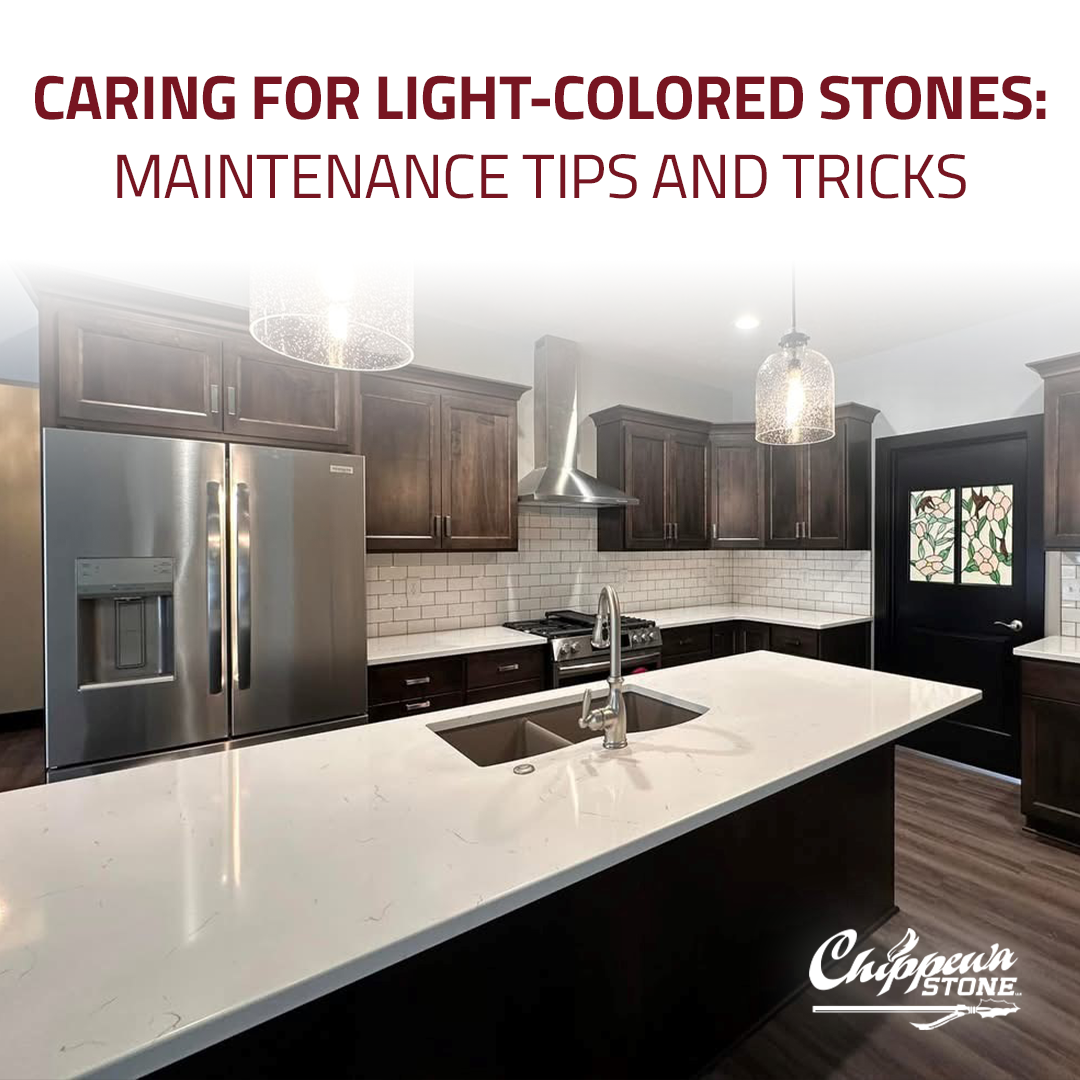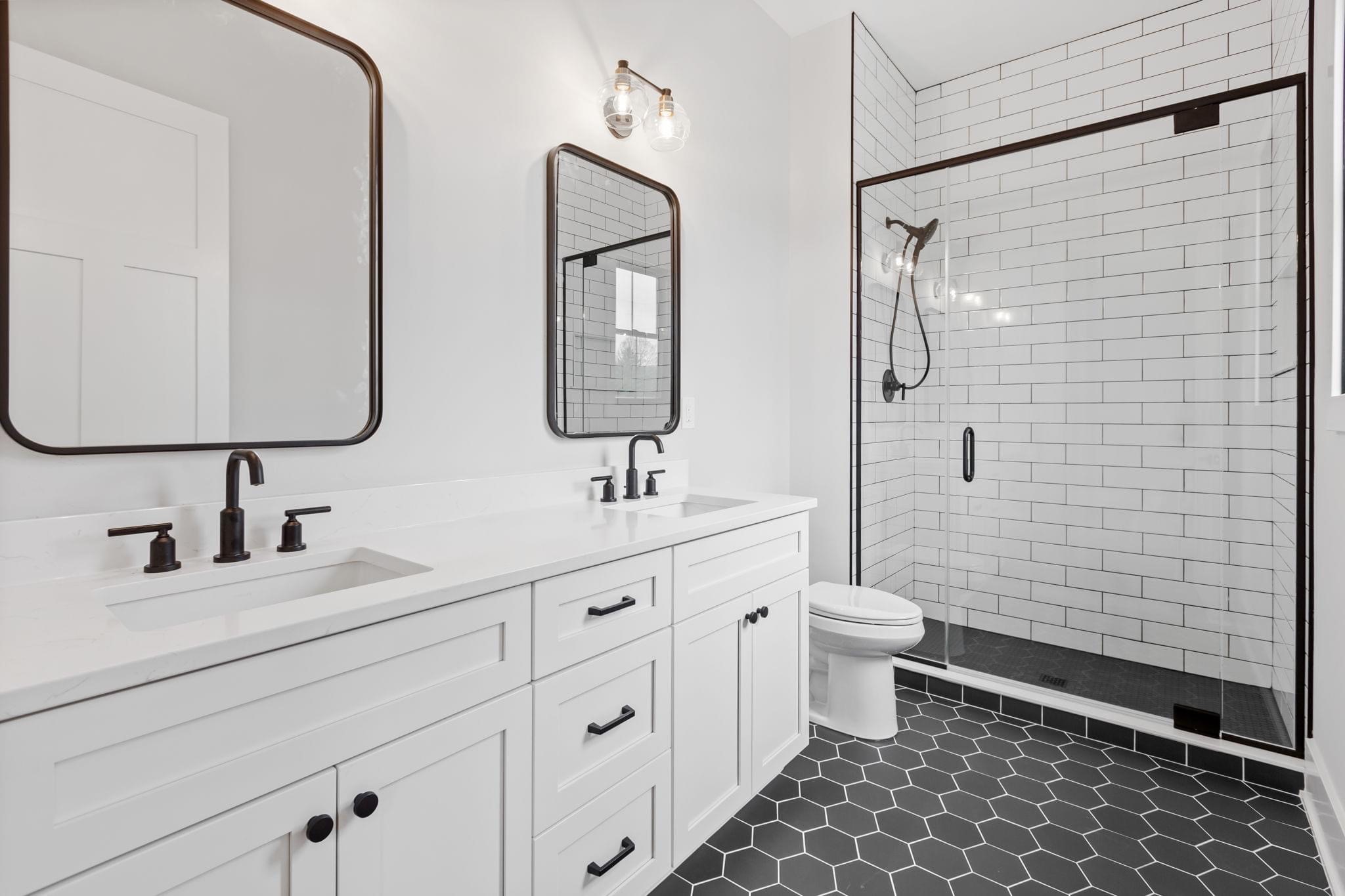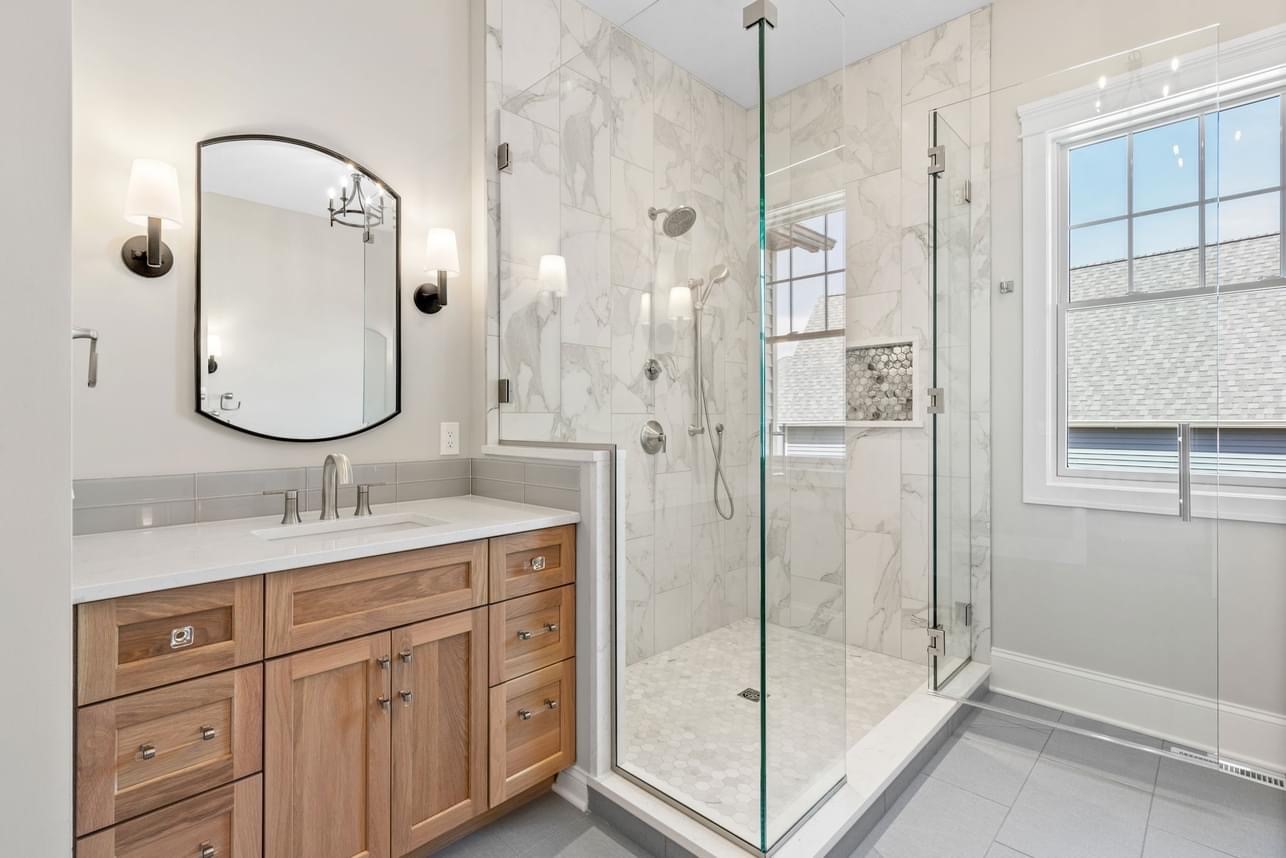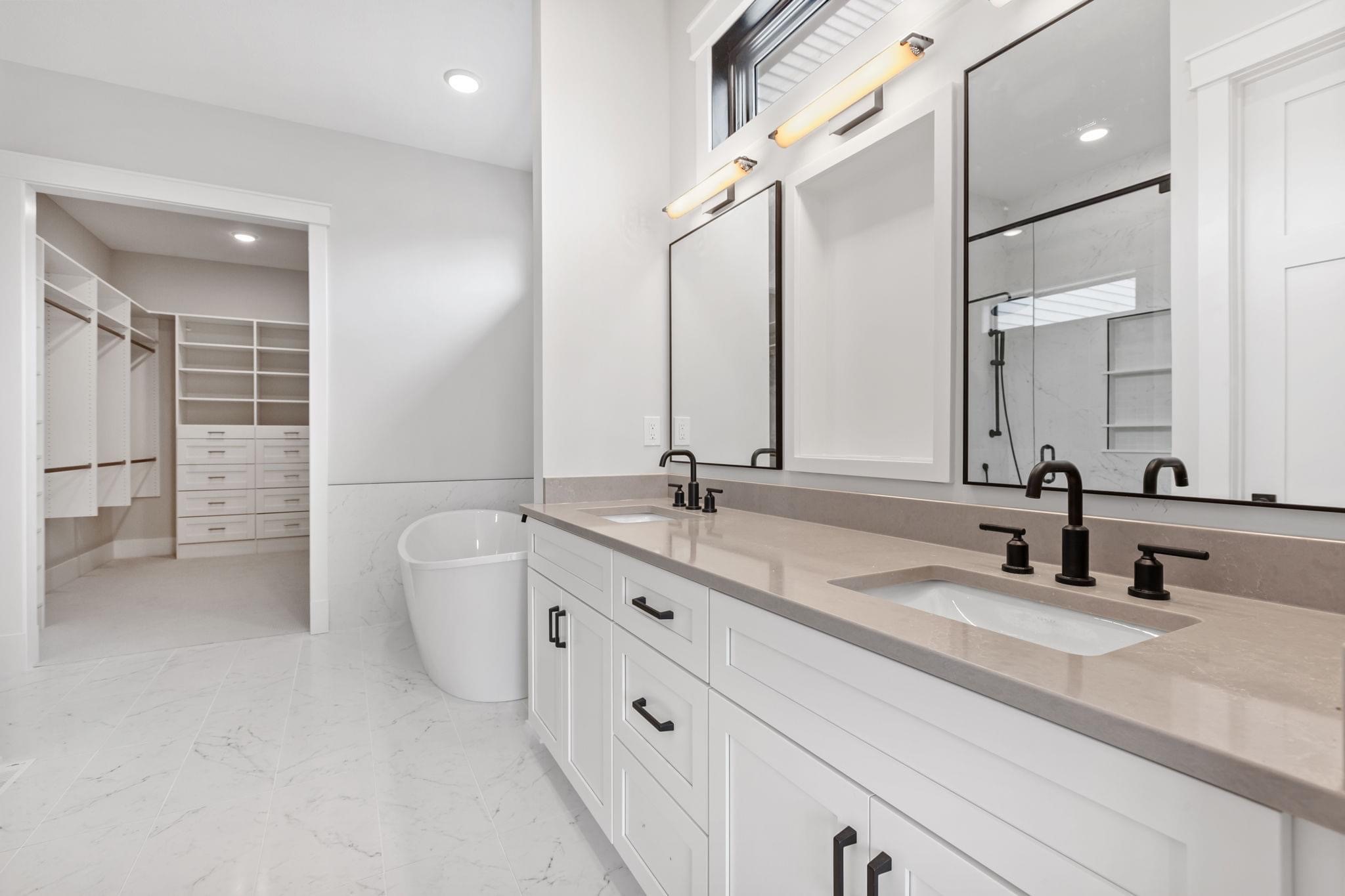Light-colored stones, including marble, quartz, granite, and quartzite, bring a touch of elegance and timeless beauty to any home. These stones are particularly sought after for countertops, backsplashes, and even fireplace surrounds. Their subtle hues and natural textures create a serene, sophisticated ambiance, making them an ideal choice for various design styles. However, light-colored stones, while stunning, can require more attention and care than their darker counterparts. Their susceptibility to staining, scratching, and discoloration calls for proactive maintenance to keep them looking pristine.
In this blog, we’ll dive into essential tips and tricks for caring for light-colored stones, helping homeowners maintain their beauty and longevity. Whether you have a marble countertop or a quartzite backsplash, these tips will ensure your light-colored stones continue to shine brightly for years to come.
Understanding Light-Colored Stones
Before we get into the specifics of maintenance, it’s important to understand the unique characteristics of light-colored stones. Here’s a brief overview of some popular light-colored stones used in home design:
- Marble: Known for its luxurious appearance, marble comes in various shades, including whites and creams. Its smooth surface and veining make it a favorite for high-end interiors. However, it’s a soft stone and highly porous, which means it’s more prone to staining and scratching.
- Quartz: Quartz surfaces are engineered and often lighter in color, making them a popular choice for countertops. While quartz is non-porous and highly durable, it can still be susceptible to surface damage from heat and abrasives.
- Granite: While granite is a tougher stone, lighter-colored varieties, like white or beige granite, require proper care to prevent staining. Granite is more resistant to scratches and heat but still needs sealing to prevent damage from acidic substances.
- Quartzite: Known for its durability and sophisticated appearance, quartzite is a natural stone that can come in light hues like white, cream, and beige. While it’s more resistant to scratches than marble, quartzite is still porous and can absorb liquids, making it important to seal and maintain properly.
Why Light-Colored Stones Require Extra Care
The natural beauty of light-colored stones is undeniably appealing, but they come with their own set of maintenance challenges. The primary reason for this is their lightness, which makes stains, dirt, and scratches more noticeable. Even minor spills, such as coffee, wine, or food stains, can be more evident on a white or cream surface than on a darker stone.
Additionally, these stones are often more porous than darker varieties, meaning they can absorb liquids more quickly, leading to stains and discoloration. This is especially true for stones like marble and quartzite, which have microscopic pores that can trap moisture, oils, and acidic substances.
While the aesthetic appeal of light-colored stones is undeniable, it’s essential to take extra steps to keep them in top condition.
Essential Maintenance Tips for Light-Colored Stones
1. Seal Your Stone Surfaces
One of the most important steps in maintaining light-colored stones is sealing. Stone sealers create a protective barrier on the surface that prevents liquids from seeping into the stone and causing permanent stains. Sealing also helps to reduce the wear and tear from daily use, making it easier to clean and maintain the surface.
For porous stones like marble, quartzite, and granite, sealing should be done regularly. The frequency of sealing depends on the type of stone and how much use it receives. In general, marble and quartzite should be sealed every six months to a year, while granite countertops may only need sealing every one to two years. Always follow the manufacturer’s recommendations when applying sealants and ensure that the stone is clean and dry before application.
2. Clean with Gentle Products
For light-colored stones, it’s crucial to use the right cleaning products. Harsh cleaners, especially those containing acidic ingredients like vinegar or citrus, can etch and damage the surface. Since light-colored stones are more prone to visible stains, using a mild pH-neutral cleaner will help maintain their shine and appearance.
You can make your own gentle cleaning solution by mixing warm water with a few drops of dish soap or a pH-neutral cleaner specifically designed for stone surfaces. Avoid abrasive scrubbers like steel wool, which can scratch the stone. Instead, use a soft cloth or microfiber towel to wipe down your surfaces gently.
3. Wipe Up Spills Immediately
Light-colored stones are highly susceptible to stains from acidic foods, drinks, and substances like coffee, wine, and citrus juices. To prevent these substances from seeping into the stone, wipe up spills immediately using a soft cloth or paper towel.
For acidic liquids, like wine or vinegar, it’s especially important to act quickly. These can etch the stone and cause irreversible damage if left on the surface for too long. In cases where stains have already set in, using a specialized stone cleaner or poultice can help lift the stain, though it’s always best to prevent the problem in the first place.
4. Avoid Direct Heat Exposure
While granite and quartz are more heat-resistant than marble or quartzite, all light-colored stones can be damaged by excessive heat. Direct heat from pots, pans, or hot appliances can cause thermal shock, which may lead to cracks or discoloration over time.
To protect your light-colored stone surfaces, always use trivets, coasters, or hot pads when placing hot cookware on countertops. For backsplashes, avoid placing hot items directly on the stone’s surface. It’s a simple habit that will help extend the lifespan of your stone and keep it looking new.
5. Prevent Scratching and Abrasions
Light-colored stones, particularly marble and quartzite, are more prone to scratches than harder stones like granite. While quartz is engineered to be more durable, it can still be scratched by sharp objects or abrasive materials. To protect your stone, use cutting boards when chopping food, and avoid dragging heavy or sharp objects across the surface.
If you do happen to notice any small scratches or abrasions on your stone, most light-colored stones can be polished or buffed out with the right materials. However, for deeper scratches or chips, it’s best to consult a professional stone restoration expert who can help restore the stone’s original finish.
6. Use Trivets and Coasters
To prevent water rings and heat marks from forming on your light-colored stone surfaces, always use coasters, trivets, or placemats when placing glasses, cups, or dishes on countertops and tables. Spilled water or condensation can leave rings or stains on stone, especially on softer stones like marble or quartzite.
By keeping these protective items on hand, you can avoid common marks and keep your stone surfaces looking flawless.
7. Deep Cleaning and Professional Care
While regular cleaning and maintenance are vital for preserving light-colored stones, it’s also a good idea to schedule periodic professional cleaning and care. Over time, even with diligent cleaning, the stone can accumulate grime or residue that’s difficult to remove with everyday cleaning methods.
A professional stone care specialist can deep clean your stone surfaces and reapply a protective sealer. If your stone has significant damage, like chips or cracks, a stone restoration expert can repair it and restore its original beauty.
Protecting Light-Colored Stones from Long-Term Damage
Aside from regular cleaning and maintenance, there are a few additional steps you can take to protect your light-colored stones from long-term damage:
- Avoid Harsh Chemicals: Never use harsh chemicals like bleach, ammonia, or abrasive powders to clean light-colored stones. These can discolor and damage the surface, leading to irreversible harm.
- Monitor Indoor Humidity: Light-colored stones, especially marble and quartzite, can be affected by changes in humidity. Excessive moisture or very dry conditions can cause stones to react, leading to damage. Consider using a humidifier or dehumidifier to maintain optimal indoor conditions.
Final Thoughts
Light-colored stones add an air of sophistication and elegance to any home. However, maintaining their beauty requires consistent care and attention. By following these maintenance tips—sealing the stone, cleaning with gentle products, wiping up spills promptly, and protecting the surface from scratches and heat—you can ensure that your light-colored stones stay as stunning as the day they were installed.
Remember, the key to keeping light-colored stones looking their best is prevention. Regular maintenance and a few simple protective measures will go a long way in preserving the natural beauty of marble, granite, quartz, and quartzite surfaces. Whether you have a light-colored stone countertop or backsplash, taking these steps will ensure your stone remains a durable and timeless feature in your home.








